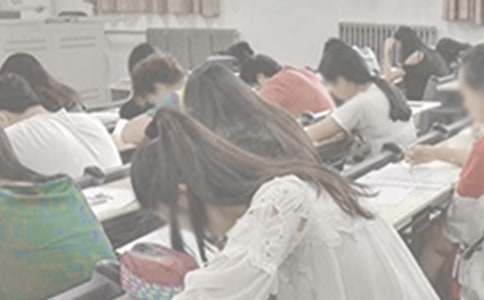- 相关推荐
托福考试最新模拟预测题及答案
In July of 1994, an astounding series of events took place. The world anxiously watched as, every few hours, a hurtling chunk of comet plunged into the atmosphere of Jupiter. All of the twenty-odd fragments, collectively called comet Shoemaker-Levy 9 after its discoverers, were once part of the same object, now dismembered and strung out along the same orbit. This cometary train, glistening like a string of pearls, had been first glimpsed only a few months before its fateful impact with Jupiter, and rather quickly scientists had predicted that the fragments were on a collision course with the giant planet. The impact caused an explosion clearly visible from Earth, a bright flaming fire that quickly expanded as each icy mass incinerated itself. When each fragment slammed at 60 kilometers per second into the dense atmosphere, its immense kinetic energy was transformed into heat, producing a superheated fireball that was ejected back through the tunnel the fragment had made a few seconds earlier. The residues from these explosions left huge black marks on the face of Jupiter, some of which have stretched out to form dark ribbons.

Although this impact event was of considerable scientific import, it especially piqued public curiosity and interest. Photographs of each collision made the evening television newscast and were posted on the Internet. This was possibly the most open scientific endeavor in history. The face of the largest planet in the solar system was changed before our very eyes. And for the very first time, most of humanity came to fully appreciate the fact that we ourselves live on a similar target, a world subject to catastrophe by random assaults from celestial bodies. That realization was a surprise to many, but it should not have been. One of the great truths revealed by the last few decades of planetary exploration is that collisions between bodies of all sizes are relatively commonplace, at least in geologic terms, and were even more frequent in the early solar system.
1. The passage mentions which of the following with respect to the fragments of comet Shoemaker-Levy 9?
(A) They were once combine in a larger body.
(B) Some of them burned up before entering the atmosphere of Jupiter.
(C) Some of them are still orbiting Jupiter.
(D) They have an unusual orbit.
2. The word "collectively" in line 3 is closest in meaning to
(A) respectively
(B) popularly
(C) also
(D) together
3. The author compares the fragments of comet Shoemaker-Levy 9 to all of the following EXCEPT
(A) a dismembered body
(B) a train
(C) a pearl necklace
(D) a giant planet
4. Before comet Shoemaker-Levy 9 hit Jupiter in July 1994, scientists
(A) had been unaware of its existence
(B) had been tracking it for only a few months
(C) had observed its breakup into twenty-odd fragments
(D) had decided it would not collide with the planet
5. Before the comet fragments entered the atmosphere of Jupiter, they were most likely
(A) invisible
(B) black
(C) frozen
(D) exploding
6. Superheated fireballs were produced as soon as the fragments of comet Shoemaker- Levy 9
(A) hit the surface of Jupiter
(B) were pulled into Jupiter’s orbit
(C) were ejected back through the tunnel
(D) entered the atmosphere of Jupiter
7. The phrase "incinerated itself" in line 9 is closest in meaning to
(A) burned up
(B) broke into smaller pieces
(C) increased its speed
(D) grew in size
8. Which of the following is mentioned as evidence of the explosions that is still visible on Jupiter?
(A) fireballs
(B) ice masses
(C) black marks
(D) tunnels
9. Paragraph 2 discusses the impact of the comet Shoemaker-Levy 9 primarily in terms of
(A) its importance as an event of great scientific significance
(B) its effect on public awareness of the possibility of damage to Earth
(C) the changes it made to the surface of Jupiter
(D) the effect it had on television broadcasting
10. The "target" in line 20 most probably referred to
(A) Earth
(B) Jupiter
(C) the solar system
(D) a comet
ADDBC DACBA
【托福考试最新模拟预测题及答案】相关文章:
高考语文阅读模拟预测题07-17
高考英语预测题及答案(3)06-04
最新英语六级阅读理解预测题及答案09-03
成人高考语文预测题及答案10-02
高考文科数学预测题及答案解析06-25
成人高考《教育理论》预测题及答案08-24
江苏高考英语完形填空预测题及答案10-07
成考专升本教育理论预测题及答案05-10
大学英语四级阅读模拟预测题07-03
英语六级翻译预测题及答案08-18